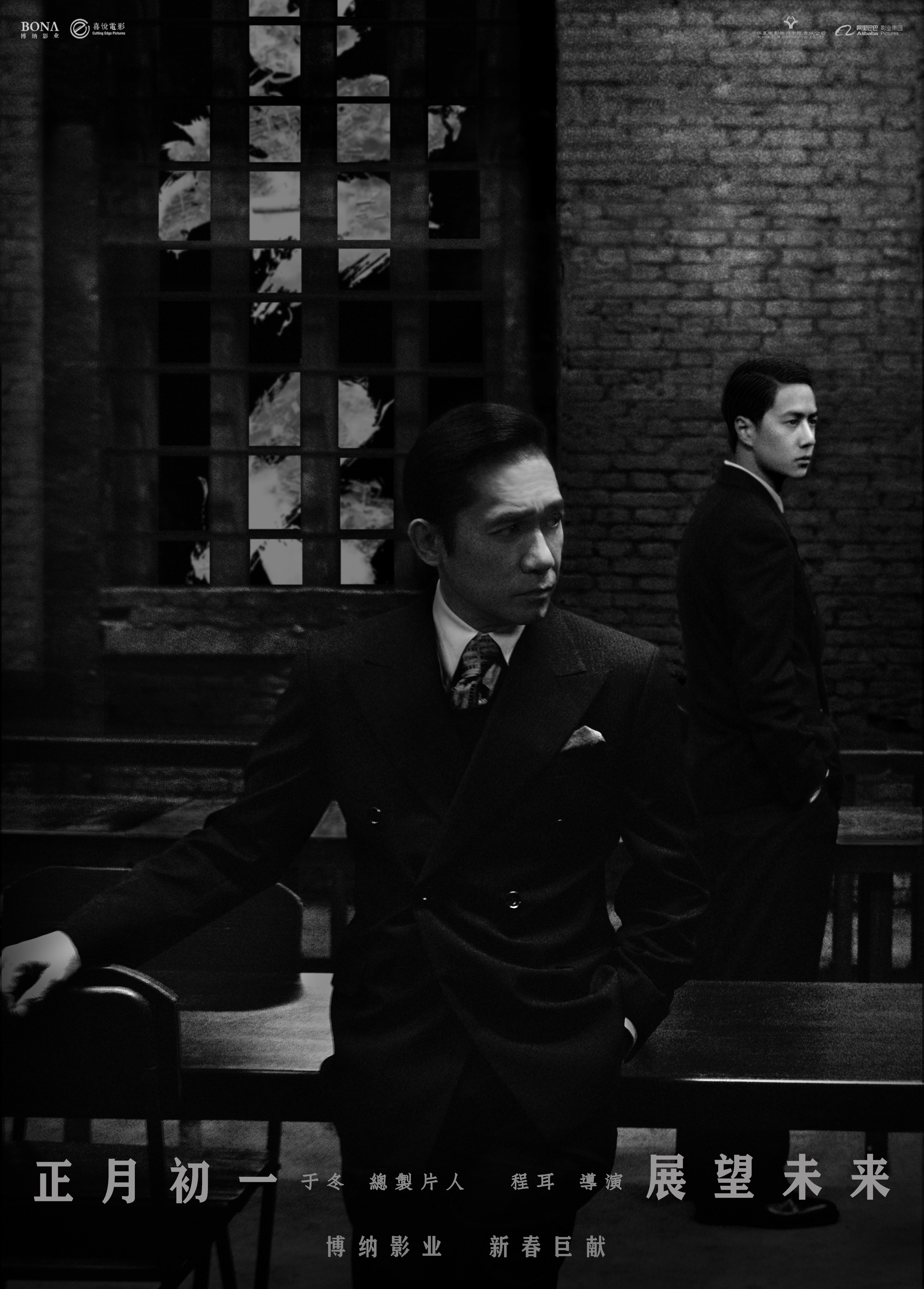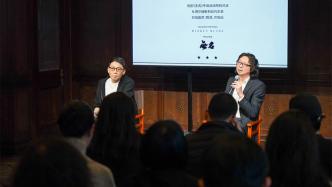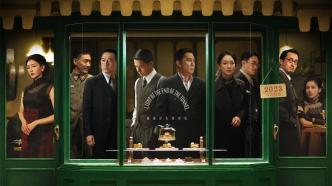
Following "Romantic Disappearance History", director Cheng Er's film "No Name" polished over seven years will meet the audience during the Spring Festival. "No Name" has already gained the attention of the industry and the market before its release. Considering Cheng Er's unique personal artistic style in his previous work, this work is still a new attempt that does not fall into the stereotype of the genre.

"No Name" poster
The film focuses on the complex and treacherous situation in the Shanghai area in the 1920s, redraws the real historical picture, and highlights the deeds of heroes who were lurking inside the hostile forces and fighting against them under the leadership of the Communist Party of China at that time. The story focuses on the multi-party struggles in Yan'an, Chongqing, Nanjing, and Japan, and covers a time span of several decades. It completes the creative purpose of reflecting the changes of the "big era" through specific "small events". What is more noteworthy is that "No Name" presents a distinct authorship in narrative style and characterization, which not only expands the genre space of spy film creation, but also makes a useful exploration for the image expression form of mainstream discourse.
Nonlinear Narrative and Historical Narrative
Non-linear narratives in movies are not new. Quentin and Nolan are both contemporary film masters who broke the linear narrative structure. However, films involving historical themes and adopting a non-linear narrative structure are relatively rare.
The biggest difference between nonlinear narrative and linear narrative lies in the way they deal with the chronological order of the narrative. The former adjusts the chronological order, while the latter advances the narrative in chronological order. Linear narrative conforms to the order of events in human's daily life experience. Since things in the real world happen in chronological order, people have a natural and familiar feeling to linear narrative.
People often understand and accept storylines more easily in linear narratives because they can follow events from their own lived experience. Not only the cause and effect of the same event can be clearly displayed, but also the connection between different events—despite the need to span space or synchronize time, can also be easily assembled to form a smooth look and feel. Especially in historical films, linear narrative is the best choice for organizing the plot due to the complexity of events, large time span and numerous characters. This can ensure that the audience can accurately understand a large number of historical events and character identities in a short period of time, and can better understand the story.

"No Name" poster
However, "No Name" shows the author's ambition in terms of genre fusion and discourse innovation. The whole film uses non-linear narrative techniques to reassemble important passages in historical time and space by breaking time clues. The movie presents the development of the story by combining fragmented events and reorganizing the chronological order, and inserting important plot turning points in these events makes the story itself full of suspense and integrates it into the entire plot and action.
For example, in the section where the director meets the traitor Mr. Zhang, the director’s short questioning not only shows the professionalism of the character as a spy, but also conforms to his identity and position as the enemy sent to contact the traitor. However, as the plot progressed, the director's questioning was suddenly interrupted and turned to the scene where the director had dinner alone after finishing work. While eating, he found stains on his sleeves. He wiped them with a handkerchief, and the blood stained the white shirt. Mr. Zhang's fate was obvious. As for why the two met this time, the identity of the director as a member of a hostile force, and why Mr. Zhang was killed, the audience needs to gradually explore through the plot of the film and the details.
In this way, non-linear narrative provides the audience with a broader space for thinking, and the narrative form itself has become an important way to create suspense. Although the plot in the film seems scattered on the surface, it is actually composed of closely connected clues. By observing the details and tracking the development of the plot, we can find the connection between the various scenes and gradually reveal the whole story.
"Anonymous" combines historical facts to show important historical events such as the Japanese air raid on Guangzhou, the fall of Shanghai, and the death of Wang Jingwei, etc., and embeds them as nodes in the film as time reminders to reorganize the non-linear time structure. The superficial connection between events is concealed and externalized as the relationship between the characters in the story, which is revealed by their behavior or language. For example, the three passages of the Japanese aviation soldiers on the plane, the Japanese devils sitting around the stove, and the Japanese duke lying dead in the field can also be connected into a coherent secondary line through the dialogue of the characters in the film.

Stills of "No Name"
The film breaks away from the conventional narrative mode, and the time change, plot development, and even character identity information are all left to the audience to "solve puzzles". Non-linear narrative has become an important means. In fact, it is the film's objective reorganization of the narrative structure from both major events in the background of the times and small plot points in the development of the plot, which provides more clues for the audience to collect and inspires the audience to explore the film's story. The internal driving force of solving doubts, thus further deepening the audience's personal sense of the history in the film.
As a historical film, "No Name" has taken an exploratory step. Although the narrative structure of the film seems to be "disordered" at the moment, there is some controversy, but the creative method of leaving the story puzzles to the audience and engaging in two-way interactive thinking with the audience has positive significance for the continuous exploration of more expressive artistic grammar for the main theme film .
unsung characters, visible heroes
In addition to the above-mentioned breakthroughs in the narrative structure, the film also strives to get rid of the conventional formula of genre and content in character creation. With the same title, there are basically no detailed names for the characters in the film, and at most they are named with "surname + Mr./Miss" or "surname + job title". It is obviously less prudent to use vague pronouns to distinguish characters than to use easy-to-remember names to distinguish characters.
Regardless of the lack of full names of the characters in the film and the very small number of times of calling each other, which makes it more difficult to lay out the relationship between the characters, let’s just talk about the use of the "nameless" approach in historical movies to clearly explain the stories of many forces and characters. , but also to complete the task of reflecting the background of the great era, the difficulty is enough to make people daunting. Then, "No Name" can still create characters with different characteristics that meet the needs of the plot development under the condition that the characters are "nameless", and its approach is very worth exploring.
The obsession with character names often comes from the need for the audience to quickly distinguish and memorize the many characters that appeared successively in the early stage of the film. From this point of view, the most important thing about a person's name is its functionality. "No Name" strictly controls the narrative rhythm when unfolding the plot, providing the audience with enough time to remember the characters. At the same time, the film has carried out meticulous design in terms of actor selection, character actions, language, etc., which strengthens the role of the characters as a play, and effectively avoids the situation where the audience is troubled by the "unnamed" characters and then affects the viewing of the movie.

"No Name" poster
The two protagonists in the story, Director He and Secretary Ye, are played by actors Tony Leung and Wang Yibo respectively. The two actors are quite different in appearance characteristics and visual age, as well as in the way of speaking and the type of language they speak.
Director He's most dramatic appearance is his conversation with Mr. Zhang, a rebellious underground party member. During the process, Director He's approachability, kindness and kindness all highlight the character's behavior style. Although for such a character, the audience can often deduce that there must be a "hidden" secret through a keen sense of smell, but it cannot be denied that against the backdrop of Mr. Zhang's embarrassment, the way Director He communicated with him is contagious , more oppressive. In addition to the content of the conversation between the two, even without the exact names, the audience can easily obtain the clear identity information of the two.
Secretary Ye's dramatic appearance is different from that of Director He. He and his colleague Captain Wang had breakfast in the shop, and then joked with each other around a "steamed pork ribs". Such an appearance design shows from the side the fun of the young Secretary Ye, and his fluent Shanghai dialect blends this character into the fireworks of life. In the subsequent scenes, Secretary Ye and Captain Wang went to investigate the dead body of the Japanese soldier. By showing the work content of the two, the film conveyed a certain amount of information to the audience, so that the audience can preliminarily judge their identities.
Combining the fragmented structure and non-linear narrative techniques adopted by the film, the character "Nameless" can obviously echo the turbulent era environment created by the film, and to a certain extent improve the film's restoration of history. The era of the story in the play is an era when all forces are fighting each other and everyone is in danger. The staff of our party are involved in it, and the complexity of their identities and the difficulty of secret work can be imagined. The "nameless" characters shape tangible heroic feats. The film's reflection of the reality of the times and the intricate and intertwined plot concepts complement each other, and together reproduce the magnificent history of our party's desperate struggle with the enemy forces and the search for a new future in the fog.

Stills of "No Name"
There are different opinions about the discussion of "No Name", and the focus of the debate is mainly on the impact of the "abnormal" narrative structure and plot organization of the film on the process of watching the film and the difficulty of understanding the film. Perhaps the transformation in the creation of "No Name" did contain trivial image details and deeper image connotations, which led to the establishment of the so-called "movie viewing threshold", but for film creation, continuous updating and exploration are more important. The audiovisual way of expressing power is both beneficial and necessary.
Especially with reference to the overall creation situation of today's historical and spy war-themed films, it is not difficult to find that the reshaping of the existing narrative mode and narrative content is constantly going on, and "Anonymous" is not an exception. Perhaps the widespread discussion caused by the film is just a signal-more audiences are willing to pay attention to the changes that are taking place in the film, and their viewing feedback will, together with the enthusiasm of the filmmakers to create films, become better films in the future An important cornerstone of ecology.
(Introduction to the author: Zheng Yang, associate professor at the School of Film and Television Media, Shanghai Normal University; Cui Yajie, postgraduate student at the School of Film and Television Media, Shanghai Normal University)


